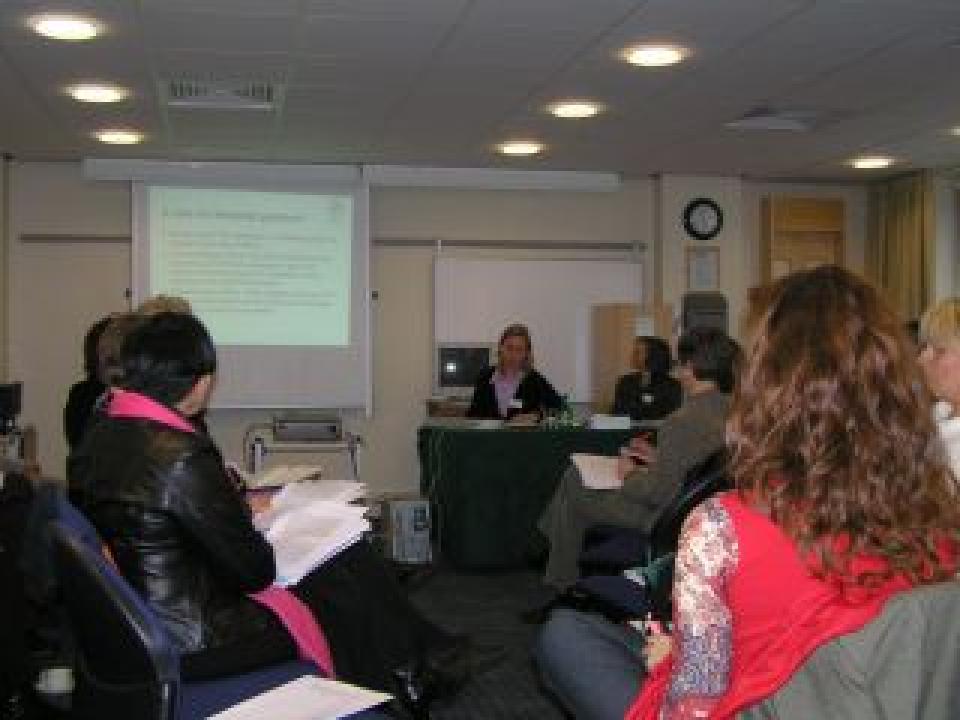
We still haven't been able to change trends
The overall picture from the symposium was rather pessimistic. "Why do we still discuss women and ICT - after more than 20 years of effort to change the situation?" Many of the same issues are still there, after so many years with research and initiatives to 'bridge' the gender gap in computing. The number of women in ICT education and the ICT business has not increased, but is rather once again on its way down. The ICT profession is still dominated by 'young, single, males' (although we did not get an answer to the question of where these young, single males go when they grow older or have children). Women within the ICT-business still don't advance to higher positions as easily as men, and many women still drop out. Children's images of work and occupations are still very much gendered in 'traditional' ways, and this guides them when they choose their own education. Although there are numbers of initiatives and projects to recruit and retain women in ICT education which have positive results, we still haven't been able to change these trends.
The 2005 European Symposium focused on work and education. Participants had a choice of 8 different workshops with themes as diverse as "Learning" or "ICT policy and strategic issues".
Gender inclusion strategies
The participants of workshop related to Gender & ICT policy issues examined inclusion strategies, ICT policies impact on women's lives, and looked at policies and practices in Europe. The workshop participants noted that over the past two decades, gender has been recognized as an important dimension of science and technology policy, particularly within the rapidly evolving policies of the European Research Area*. However, the barriers to female participation in research and technological development persist, with consequences for the suitability and accessibility of technological products and systems. "What kind of gender policies are needed to involve more women in ICT industry, technology and science research and education?", "Under what circumstances might such policies work?", were the main issues addressed at the workshops.
At the end of the day, participants compared the context of women in computing in three different geographical regions.
| Presented figures on women students in computer science** | |
|---|---|
| Norway | from less than 10 % up till 20% |
| Malaysia | around 50 % |
| State of California | accurate information not available, but presumably around 20-25 % |
- Norway always put a strong political emphasis on gender equality, and developed inclusion efforts related to girls/women and ICT . Despite this long-standing concern for gender and ICT, the number of women in computer science has remained low. Since 1997 , the Norwegian University of Science and Technology has running a campaign that succeeded in raising significantly the number of women students in computer science (from 6 % to 38%). However after the couple of years the number dropped again below 10%.
- The Malaysian government has run several high-profile national initiatives to develop an ICT industry and to persuade young people - men as well as women - to study ICT. Government inclusion policy had emphasis on equal opportunities for women but not particularly with regard to ICT/computer science. Even though there has been no visible feminist politics involved, women constitute about half of the higher education student population in computer science and have also a large share of the faculty students.
- The State of California has no public policy with regard to gender and ICT, but inclusion measures have been undertaken by seemingly quite powerful networks of women computer scientists and some universities. The result is a higher share of women in computer science than in Norway, however women still remain a minority relative to men.
Increasing well-paid job opportunities for women
The Malaysian experiences show that the existence of well-paid ICT industry job opportunities can encourage more women to enrol in ICT subjects and computer science. A similar pattern was noted in Bulgaria, which before 1989 was the main supplier of electronic and communications equipment for the entire Soviet bloc. When Bulgarian ICTs were in such high demand, women represented 20% of all university students in ICT-related subjects.
With the fall of the "Iron Curtain" and the transition from a centrally-planned to a free market economy, Bulgaria lost its specialization in ICTs. The main institutes could no longer support production, firms closed down, and thousands of electronic and communications engineers, both men and women, lost their jobs. Unemployment rates increased dramatically, and many women who applied for jobs were rejected in favour of male applicants. In result ICTs as a subject of study lost its attractiveness for women, because it became difficult to find a job with an engineering diploma.***
Sociology Professor Judy Wajcman**** (2004) claims that to achieve the goal of a 'de-masculinised' ICT and computer science, there is a need for feminist politics to push for the necessary reforms. Participants at the 3rd European Symposium on Gender and ICT paint a more complex and paradoxical picture and suggest the need to be more concerned about the intricacy of the culture of ICT and computer science.
* The main aim of the European Research Area is to contribute to the creation of a genuine 'internal market' in research to increase pan-European co-operation and co-ordination of national research activities. The main financial instruments of the ERA are the EU's Research Framework Programmes.
**
Source: Presentation" Paradoxes of gender and ICT policy. A comparative study"; Vivian A. Lagesen, Nora Levold and Knut H. Sørensen (Norwegian University of Science and Technology)
***Source:Bridging the Gender Digital Divide: A Report on Gender and ICT; L. Simerska, K. Fialova;UNDP/UNIFEM
**** Sociology Professor Judy Wajcman. Judy Wajcman's research has centred on
technological change, employment relations and organisational analysis. She
is an expert in feminist theory in these areas and has developed a
theoretical framework for the analysis of technology and social change,
known as the social shaping approach.
- 6220 views







Add new comment